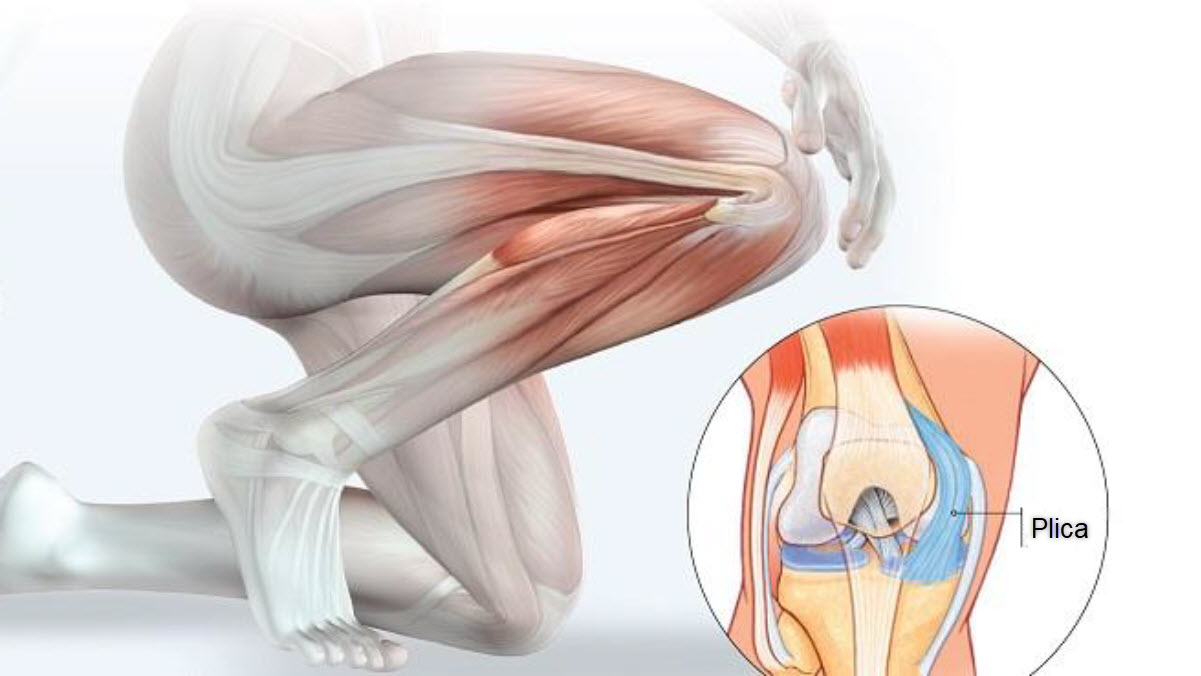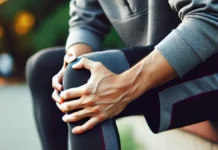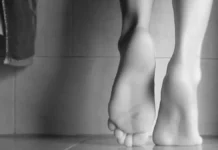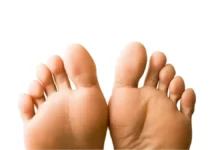When the Sensory System Is Under Pressure: Understanding Nerve Compression
Our ability to feel, move, and interact with the world depends on a finely tuned network—the sensory nervous system. Composed of nerves, receptors, and pathways that carry information between the body and the brain, this system is vital to our daily experience. It interprets a gentle touch, alerts us to danger, and guides our coordination and posture. But what happens when this intricate network is disrupted?
Nerve compression, also known as compression neuropathy or entrapment syndrome, is one such disruption. It occurs when a nerve is pinched or compressed by surrounding tissues, such as muscles, bones, ligaments, or fascia. This pressure can alter the nerve’s ability to transmit signals, resulting in pain, numbness, tingling, or muscle weakness. In severe or prolonged cases, it may even lead to permanent nerve damage.
The Delicate Architecture of the Sensory System
Peripheral nerves travel long paths through tight anatomical corridors. Some pass through bone tunnels, others between layers of muscle or fascia. These passageways are essential for function but also represent points of vulnerability. When alignment, posture, or biomechanics are disrupted—by repetitive motion, injury, inflammation, or structural imbalances—nerves can become compressed.
For example, the median nerve in the wrist may be pinched in carpal tunnel syndrome. The sciatic nerve can be irritated by the piriformis muscle in the pelvis. In the spine, nerve roots exiting through intervertebral foramina may be compressed by herniated discs or joint degeneration. Each case varies in intensity and location but shares a common root: mechanical stress on neural tissue.
Causes and Contributing Factors
Nerve compression is multifactorial. Common causes include:
- Repetitive movements: Typing, lifting, or overhead activity can lead to localized strain and inflammation.
- Poor posture: Slouched or imbalanced positions increase pressure on certain nerve pathways.
- Trauma: Fractures, dislocations, or direct impacts can entrap or damage nerves.
- Inflammation: Swelling from injury or autoimmune conditions can narrow nerve passageways.
- Muscle tightness or imbalance: Overactive or shortened muscles can press on nearby nerves.
- Degenerative changes: Arthritis or disc wear in the spine may close the spaces nerves pass through.
These factors often interact. A repetitive task done with poor posture over months may trigger inflammation and muscle tension, ultimately compressing a nerve.
Common Symptoms of Nerve Compression
Depending on the affected nerve and site of compression, symptoms may include:
- Localized or radiating pain
- Numbness or “pins and needles” sensation
- Muscle weakness or coordination issues
- A burning or electric shock-like feeling
- Aggravation with certain positions or activities
Symptoms may develop gradually or suddenly. If left untreated, prolonged compression can reduce nerve conduction, lead to muscle wasting, and significantly impair function.
The Broader Impact
Beyond the physical, nerve compression can affect daily life in profound ways. Chronic pain may interfere with sleep, reduce mobility, or limit professional activity. Tasks once taken for granted—buttoning a shirt, typing, or walking—can become difficult or painful. This often leads to frustration, emotional stress, and a sense of isolation, especially if the problem persists without clear diagnosis or relief.
That’s why early recognition and a comprehensive, holistic approach to treatment are essential. Addressing the root mechanical causes—not just masking symptoms—is key to recovery.
A Path Toward Relief
Osteopathy offers a valuable perspective in the management of nerve compression. By viewing the body as an interconnected whole, osteopaths aim to restore mobility, reduce tissue tension, and improve the mechanical environment surrounding nerves. Techniques like myofascial release, joint mobilization, and postural correction can relieve pressure and support long-term healing.
In some cases, collaboration with medical professionals is required for imaging, neurological evaluation, or surgical consultation. But many nerve compressions, especially in early stages, respond well to conservative manual therapy and movement-based rehabilitation.
Where Nerves Suffer: Common Sites of Compression
Nerve compression syndrome, also called compression neuropathy, occurs when nerves become compressed or trapped, causing symptoms such as pain, numbness, tingling, and muscle weakness. Causes can vary depending on the location of the nerve compression. Here are some common examples of nerve compression syndromes and their possible causes:
List of example:
- Compression of the ulnar nerve at the elbow:
- Cause: Compression of the ulnar nerve inside the elbow, often due to prolonged pressure on the elbow.
- Risk factors : Prolonged elbow position, elbow injuries.
- Symptoms: Numbness and tingling in the little finger and part of the ring finger, muscle weakness in the hand.
- Posterior tibial nerve syndrome:
- Cause: Compression of the posterior tibial nerve in the ankle, usually due to excessive tension in the area.
- Risk factors: Flat feet, ankle injuries.
- Symptoms: Pain and inflammation inside the ankle, collapsed arches of the foot.
- Compression of the femoral nerve:
- Cause: Compression of the femoral nerve in the pelvic region, often due to excessive pressure or traction.
- Risk factors: Pregnancy, obesity, pelvic surgery.
- Symptoms: Pain in the front of the thigh and knee, muscle weakness in the leg.
- Femoral nerve syndrome:
- Cause: Compression of the femoral nerve in the inguinal or abdominal region.
- Risk factors: Pregnancy, obesity, herniated disc.
- Symptoms: Pain in the front of the thigh, muscle weakness, numbness in the leg.
- Hypoglossal nerve compression:
- Cause: Compression of the hypoglossal nerve in the neck, often due to cervical trauma.
- Risk factors: Neck injuries, tumors.
- Symptoms: Impaired speech, difficulty moving the tongue.
- Lateral cutaneous nerve syndrome of the thigh:
- Cause: Compression of the lateral cutaneous nerve of the thigh as a result of pressure or pinching.
- Risk factors: Obesity, tight belts.
- Symptoms: Numbness and tingling in the side of the thigh.
- Compression of the pudendal nerve:
- Cause: Compression of the pudendal nerve in the pelvic region.
- Risk factors: Prolonged sitting, pelvic trauma.
- Symptoms: Pelvic pain, pain when sitting, sexual dysfunction.
- Axillary nerve syndrome:
- Cause: Compression of the axillary nerve in the shoulder.
- Risk factors: Shoulder injuries, compression during sleep.
- Symptoms: Shoulder pain, weakness when raising the arm to the side.
- Popliteal nerve compression:
- Cause: Compression of the popliteal nerve behind the knee.
- Risk factors: Knee injuries, popliteal cysts.
- Symptoms: Pain behind the knee, weakness in the calf.
- Radial nerve syndrome in the wrist:
- Cause: Compression of the radial nerve at the wrist.
- Risk factors: Wrist injuries, prolonged wrist position.
- Symptoms : Wrist pain, weakness in the hand, difficulty extending the fingers.
- Compression of the ilioinguinal nerve:
- Cause: Compression of the ilioinguinal nerve in the pelvic region.
- Risk factors: Pregnancy, abdominal surgery.
- Symptoms: Pain in the groin area, numbness in the genital area.
- Dorsal lateral cutaneous nerve syndrome of the foot:
- Cause: Compression of the dorsal lateral cutaneous nerve of the foot.
- Risk factors: Inadequate footwear, trauma.
- Symptoms: Numbness and tingling on the top of the foot.
- Suprascapular nerve compression:
- Cause: Compression of the suprascapular nerve in the shoulder.
- Risk factors: Shoulder injuries, repetitive arm movements.
- Symptoms: Shoulder pain, weakness in the arm.
- Iliohypogastric nerve syndrome:
- Cause: Compression of the iliohypogastric nerve in the pelvic region.
- Risk factors: Pregnancy, abdominal surgery.
- Symptoms: Pain in the lower abdomen.
- Compression of the greater occipital nerve:
- Cause: Compression of the greater occipital nerve in the neck region.
- Risk factors: Muscle tension, cervical trauma.
- Symptoms: Pain in the neck area, skull and behind the eyes.
- Lateral plantar digital nerve syndrome:
- Cause: Compression of the lateral plantar digital nerve in the foot.
- Risk factors: Improper footwear, high impact activities.
- Symptoms: Pain in the side of the foot, numbness in the toes.
- Compression of the dorsolar nerve of the foot:
- Cause: Compression of the dorsolar nerve of the foot.
- Risk factors: Tight shoes, high impact activities.
- Symptoms: Pain and numbness on the top of the foot.
- Inferior Cluneal Nerve Syndrome:
- Cause: Compression of the inferior cluneal nerve in the gluteal region.
- Risk factors: Prolonged sitting, trauma.
- Symptoms: Pain in the gluteal region and lower back.
- Compression of the dorsal cutaneous nerve of the arm:
- Cause: Compression of the dorsal cutaneous nerve of the arm.
- Risk factors: Arm injuries, prolonged arm position.
- Symptoms: Numbness and tingling on the upper arm.
- Buccal nerve syndrome:
- Cause: Compression of the buccal nerve in the mouth.
- Risk factors: Poor dental position, oral surgery.
- Symptoms: Pain in the mouth, numbness of the tongue.
- Compression of the lateral cutaneous nerve of the abdomen:
- Cause: Compression of the lateral cutaneous nerve of the abdomen, often due to increased abdominal pressure.
- Risk factors: Pregnancy, obesity.
- Symptoms : Pain and numbness along the abdominal wall.
- Medial plantar nerve syndrome:
- Cause: Compression of the medial plantar nerve in the arch of the foot.
- Risk factors: Flat feet, uncomfortable shoes.
- Symptoms: Pain and numbness in the inner part of the foot.
- Compression of the medial cutaneous nerve of the thigh:
- Cause: Compression of the medial cutaneous nerve of the thigh.
- Risk factors: Tight clothing, obesity.
- Symptoms: Numbness and tingling on the inner thigh.
- Dorsal digital nerve syndrome of the hand:
- Cause: Compression of the dorsal digital nerve of the hand.
- Risk factors: Repetitive hand movements, prolonged hand positions.
- Symptoms: Pain and numbness in the hand.
- Compression of the lateral cutaneous nerve of the shoulder:
- Cause: Compression of the lateral cutaneous nerve of the shoulder.
- Risk factors: Shoulder injuries, compression during sleep.
- Symptoms: Pain and numbness on the outer part of the shoulder.
- Dorsal scapular nerve syndrome:
- Cause: Compression of the dorsal scapular nerve.
- Risk factors: Muscle tension, shoulder injuries.
- Symptoms: Pain between the shoulder blades, weakness of the shoulder muscles.
- Compression of the common palmar digital nerve:
- Cause: Compression of the common palmar digital nerve in the palm of the hand.
- Risk factors: Repetitive manual activities.
- Symptoms: Pain and numbness in the palm and fingers.
- Facial nerve syndrome:
- Cause: Compression of the facial nerve, often due to inflammation.
- Risk factors: Viral infections, trauma.
- Symptoms: Facial paralysis, difficulty closing one eye.
- Compression of the dorsal digital nerve of the foot:
- Cause: Compression of the dorsal digital nerve of the foot.
- Risk factors: Tight shoes, flat feet.
- Symptoms: Pain and numbness on the top of the foot.
- Dorsal lateral cutaneous nerve syndrome of the foot:
- Cause: Compression of the dorsal lateral cutaneous nerve of the foot.
- Risk factors: Improper footwear, high impact activities.
- Symptoms: Numbness and tingling on the top of the foot.
- Compression of the medial plantar digital nerve:
- Cause: Compression of the medial plantar digital nerve in the foot.
- Risk factors: Narrow shoes, flat feet.
- Symptoms: Pain and numbness on the inner side of the foot.
- Lateral cutaneous nerve syndrome of the knee:
- Cause: Compression of the lateral cutaneous nerve of the knee.
- Risk factors: Knee injuries, prolonged compression.
- Symptoms: Numbness and tingling on the outer side of the knee.
- Auriculotemporal nerve compression:
- Cause: Compression of the auriculotemporal nerve near the ear.
- Risk factors: Excessive chewing, bruxism.
- Symptoms: Ear pain, numbness of the skin around the ear.
- Median nerve syndrome in the hand:
- Cause: Compression of the median nerve in the hand.
- Risk factors: Carpal tunnel syndrome, repetitive movements.
- Symptoms: Pain, numbness and weakness in the fingers.
- Compression of the infraorbital nerve:
- Cause: Compression of the infraorbital nerve in the face.
- Risk factors: Tumors, sinusitis.
- Symptoms: Pain and numbness in the lower part of the face.
- Intercostal nerve syndrome:
- Cause: Compression of the intercostal nerve between the ribs.
- Risk factors: Chest injuries, incorrect posture.
- Symptoms: Pain between the ribs, sometimes simulating a heart attack.
- Obturator nerve compression:
- Cause: Compression of the obturator nerve in the pelvic region.
- Risk factors: Pregnancy, pelvic trauma.
- Symptoms: Pain in the inner thigh, difficulty walking.
- Iliohypogastric nerve syndrome:
- Cause: Compression of the iliohypogastric nerve in the abdominal region.
- Risk factors: Abdominal surgery, pregnancy.
- Symptoms: Pain in the lower abdominal area.
- Compression of the posterior auricular nerve:
- Cause: Compression of the posterior auricular nerve at the back of the ear.
- Risk factors: Prolonged compression, specific sleeping positions.
- Symptoms: Pain and numbness behind the ear.
- Dorsal cutaneous nerve syndrome of the hand:
- Cause: Compression of the dorsal cutaneous nerve of the hand.
- Risk factors: Repetitive activities, prolonged wrist position.
- Symptoms: Numbness and tingling on the back of the hand.
- Compression of the lateral cutaneous nerve of the hip:
- Cause: Compression of the lateral cutaneous nerve of the hip.
- Risk factors: Tight belts, obesity.
- Symptoms: Numbness and tingling in the side of the hip.
- Medial cutaneous nerve syndrome of the ankle:
- Cause: Compression of the medial cutaneous nerve of the ankle.
- Risk factors: Tight shoes, ankle sprain.
- Symptoms: Numbness and tingling inside the ankle.
- Compression of the recurrent laryngeal nerve:
- Cause: Compression of the recurrent laryngeal nerve in the neck.
- Risk factors: Cervical surgery, tumors.
- Symptoms: Voice alteration, hoarseness.
- Lateral cutaneous nerve syndrome of the arm:
- Cause: Compression of the lateral cutaneous nerve of the arm.
- Risk factors: Arm injuries, prolonged arm position.
- Symptoms: Numbness and tingling on the outer side of the arm.
- Compression of the pudendal nerve:
- Cause: Compression of the pudendal nerve in the pelvic region.
- Risk factors: Prolonged cycling, childbirth.
- Symptoms: Pelvic pain, pain during intercourse.
- Sural nerve syndrome:
- Cause: Compression of the sural nerve in the calf.
- Risk factors: Calf injuries, inadequate footwear.
- Symptoms: Pain and numbness in the back of the leg.
- Compression of the dorsal cutaneous nerve of the hand:
- Cause: Compression of the dorsal cutaneous nerve of the hand.
- Risk factors: Repetitive manual activities, prolonged wrist positions.
- Symptoms: Numbness and tingling on the back of the hand.
- Dorsal cutaneous nerve syndrome of the foot:
- Cause: Compression of the dorsal cutaneous nerve of the foot.
- Risk factors: Tight shoes, high impact activities.
- Symptoms: Numbness and tingling on the top of the foot.
- Lumbar nerve compression:
- Cause: Compression of the lumbar nerve in the lumbar region.
- Risk factors: Herniated disc, arthritis.
- Symptoms: Lower back pain, numbness in legs.
- Auriculotemporal nerve syndrome:
- Cause: Compression of the auriculotemporal nerve.
- Risk factors: Excessive chewing, bruxism.
- Symptoms: Pain in the jaw, behind the ear
- Compression of the lateral cutaneous nerve of the leg:
- Cause: Compression of the lateral cutaneous nerve of the leg.
- Risk factors: Tight clothing, obesity.
- Symptoms: Numbness and tingling in the side of the leg.
- Medial cutaneous nerve syndrome of the shoulder:
- Cause: Compression of the medial cutaneous nerve of the shoulder.
- Risk factors: Shoulder injuries, compression during sleep.
- Symptoms: Numbness and tingling on the inner part of the shoulder.
- Compression of the dorsal digital nerve of the foot:
- Cause: Compression of the dorsal digital nerve of the foot.
- Risk factors: Tight shoes, flat feet.
- Symptoms: Pain and numbness on the top of the foot.
- Lateral cutaneous nerve syndrome of the elbow:
- Cause: Compression of the lateral cutaneous nerve of the elbow.
- Risk factors: Repetitive elbow activities, prolonged position.
- Symptoms: Numbness and tingling on the outer side of the arm.
- Compression of the median nerve at the elbow:
- Cause : Compression of the median nerve at the elbow (carpal tunnel syndrome).
- Risk factors: Repetitive hand activities, genetic predisposition.
- Symptoms: Pain, numbness and weakness in the fingers.
- Long thoracic nerve syndrome:
- Cause: Compression of the long thoracic nerve in the thoracic region.
- Risk factors: Muscle tension, trauma.
- Symptoms: Back pain radiating to the abdomen, worsened by coughing or sneezing.
- Compression of the median nerve at the wrist:
- Cause: Compression of the median nerve at the wrist.
- Risk factors: Wrist fractures, repetitive wrist positions.
- Symptoms: Wrist pain, numbness in fingers.
- Lateral cutaneous nerve syndrome of the foot:
- Cause: Compression of the lateral cutaneous nerve of the foot.
- Risk factors: Tight shoes, flat feet.
- Symptoms: Numbness and tingling on the side of the foot.
- Compression of the dorsolateral cutaneous nerve of the hand:
- Cause: Compression of the dorsolateral cutaneous nerve of the hand.
- Risk factors: Repetitive hand activities, prolonged position.
- Symptoms: Numbness and tingling in the back and side of the hand.
- Axillary nerve syndrome:
- Cause: Compression of the axillary nerve in the shoulder.
- Risk factors: Shoulder injuries, compression during sleep.
- Symptoms: Shoulder pain, weakness when raising the arm to the side.
Warning Signs: How to Identify Nerve Compression
- Pain: Localized or radiating pain along the path of the compressed nerve.
- Numbness: A feeling of numbness or tingling in the area innervated by the nerve.
- Muscle weakness: A decrease in muscle strength in the affected area.
- Tingling or electric shock sensations: Tingling or electric shock sensations in the affected area.
- Decreased Sensation: Loss of feeling or decreased sensation in the area innervated by the nerve.
- Motor disorders: Difficulty performing certain movements or controlling affected muscles.
- Muscle atrophy: A decrease in muscle size due to decreased nerve activity.
- Burning sensations: Burning sensations may be felt in the affected area.
- Worse with certain activities: Symptoms may worsen with specific movements or repetitive activities.
- Radiation of symptoms: Symptoms may radiate along the compressed nerve, sometimes distant from the site of compression.
When Pain Disrupts the Everyday: Functional and Emotional Consequences
Nerve compression is not just a mechanical issue—it’s a lived experience that affects every dimension of a person’s life. While the physical symptoms of compression neuropathies are often the focus of treatment, the broader impact on daily function, emotional health, and social well-being is equally important to address. Pain has a way of inserting itself into the simplest activities, often transforming routine moments into sources of stress, frustration, and fatigue.

When nerves are compressed, the body’s ability to move freely and function efficiently becomes compromised. This leads to a cascade of physical limitations:
- Reduced Mobility: Tasks like walking, standing, reaching, or even gripping objects may become painful or difficult. This affects not only professional tasks but also basic self-care and leisure activities.
- Muscle Weakness: Nerve compression can reduce neural input to muscles, causing them to weaken or atrophy over time. This leads to imbalance, instability, and a higher risk of falls or secondary injuries.
- Altered Sensation: Numbness, tingling, or heightened sensitivity can interfere with fine motor skills—such as writing, buttoning a shirt, or typing—and increase the risk of burns, cuts, or unnoticed injuries.
- Fatigue and Deconditioning: When physical activity becomes painful, people tend to move less. This leads to overall deconditioning, muscle stiffness, and greater fatigue during even minor exertion.
These limitations can develop subtly or suddenly, but over time they have a cumulative effect, restricting independence and autonomy.
The Emotional Toll: Living with Constant Discomfort
Chronic pain is not just a sensation—it’s a condition that reshapes the emotional landscape. People living with nerve compression often face:
- Frustration and Helplessness: When pain persists despite rest or standard treatment, it can create a feeling of losing control over one’s body and life.
- Anxiety: Many individuals worry about worsening symptoms, potential loss of function, or the need for surgery. Uncertainty about the future can heighten stress.
- Depression: Persistent pain and reduced quality of life can diminish motivation and enjoyment, leading to feelings of sadness, isolation, and hopelessness.
- Social Withdrawal: Physical limitations may restrict participation in social events or hobbies, creating distance from friends, family, or communities.
This emotional weight is often invisible but profoundly real. Patients may feel misunderstood or dismissed if their suffering isn’t externally obvious.
Sleep Disruption: A Vicious Cycle
One of the most common and underestimated consequences of nerve compression is disturbed sleep. Pain often intensifies at night or when lying still, making it difficult to fall asleep or stay asleep. In turn, poor sleep exacerbates sensitivity to pain, lowers mood, impairs focus, and drains energy—creating a cycle that reinforces the suffering.
Work and Identity: The Hidden Cost
For many people, work is more than just a source of income—it’s a part of their identity and self-worth. When nerve compression interferes with one’s ability to perform professionally, the consequences are significant:
- Reduced productivity or job changes
- Increased absenteeism
- Loss of confidence and purpose
Some individuals are forced into early retirement or job retraining, while others continue working through pain, further aggravating their condition.
Toward a More Holistic Understanding
Understanding the functional and emotional consequences of nerve compression means expanding our view beyond the nerve itself. Effective care must acknowledge the interplay between body, mind, and environment.
Osteopathy contributes to this holistic view by combining structural treatment with patient-centered care. Beyond relieving physical tension, osteopaths listen to the patient’s lived experience, validate their pain, and empower them with strategies to regain movement and control.
By addressing not just where it hurts—but how it affects the person as a whole—we can support a path toward genuine, long-lasting relief.
Nerve compression can have a significant impact on the quality of life of those affected. The effects of nerve compression vary depending on the location of the affected nerve and the severity of the compression. Here are some aspects of daily life that can be impacted by nerve compression:
- Chronic Pain: Pain is one of the most common symptoms of nerve compression. It can be acute or chronic, affecting a person’s ability to carry out daily activities, work, and enjoy life.
- Reduced Mobility: Nerve compression can lead to decreased mobility, especially if it affects the limbs, joints, or spine. Movement may become painful and limited, affecting the ability to walk, stand, or perform simple tasks.
- Muscle Weakness: Prolonged nerve compression can lead to muscle atrophy and weakness, compromising muscle strength and coordination. This can make it difficult to perform tasks that were previously simple.
- Altered Sensation: Numbness, tingling, or loss of sensation associated with nerve compression can interfere with tactile sensitivity. This can affect the ability to handle objects, feel heat or cold, and can increase the risk of injury.
- Sleep Disturbances: Constant pain due to nerve compression can disrupt sleep, leading to insomnia. Lack of sleep can in turn affect concentration, mood, and the ability to cope with stress.
- Emotional Impact: Living with chronic pain and reduced mobility can have a significant emotional impact. Frustration, depression, and anxiety can set in, affecting overall quality of life.
- Functional Limitations: People with nerve compression may experience limitations in their daily activities, whether they are household chores, hobbies, or social activities. This can lead to a feeling of loss of independence.
- Occupational Difficulties: Physical limitations related to nerve compression can impact professional life. Some jobs may become difficult or impossible to perform, resulting in job adjustments, absences from work, or even disability.
- Impairment of Quality of Life: Overall, nerve compression can impair quality of life by compromising the ability to enjoy daily activities, maintain active social relationships, and participate fully in family life.
Osteopathic Assessment: A Precise Reading of the Body and Nerves
Osteopathy is an alternative health care approach that aims to treat various disorders by manipulating muscles, joints, and connective tissues. However, it is important to note that osteopathy is not always the first line of defense for the diagnosis and treatment of nerve compression syndromes. Osteopaths can play a role in relieving symptoms associated with nerve compression, but formal diagnosis and comprehensive management may require collaboration with other health professionals, such as physicians, neurologists, or physical therapists.
1. Clinical Evaluation:
- Osteopaths typically begin with a thorough assessment of the patient’s medical history, including details about current and past symptoms, injuries, and lifestyle habits.
- They also examine posture, joint mobility, and perform specific tests to assess muscle strength and sensitivity in the affected areas.
2. Palpation:
- The osteopath often uses palpation, that is, manual touch, to assess the texture, warmth and mobility of tissues.
- They can identify areas of tension, stiffness, or misalignment that could be contributing to nerve compression.
3. Neurological Tests:
- Simple neurological tests can be performed to assess nerve function, including sensation, muscle strength, reflexes, and signs of neurological dysfunction.
4. Imaging Tests:
- Although osteopaths cannot order imaging tests, they may recommend X-rays, MRIs, or other imaging tests to confirm or assess the severity of nerve compression.
5. Osteopathic Treatment:
- Once the diagnosis is made, the osteopath can use a variety of techniques to treat the nerve compression. This may include gentle joint manipulation, muscle stretching, myofascial release techniques, and other approaches aimed at restoring balance and mobility to the body.
- Osteopathy aims to reduce tension and improve the function of surrounding tissues to relieve pressure on nerves.
6. Tips and Exercises:
- Osteopaths can also provide advice on lifestyle modifications, posture and specific exercises to help prevent the nerve compression from recurring.
7. Collaboration with Other Professionals:
- If necessary, the osteopath can refer the patient to other health professionals for additional examinations, specialist opinions or other necessary interventions.
It is crucial to emphasize that osteopathic treatment may vary depending on the underlying cause of the nerve compression, and in some cases, a multidisciplinary approach with other health professionals may be necessary for a complete and effective treatment. Before starting any treatment, it is recommended to consult a health professional for an accurate diagnosis.
Releasing the Pressure: Manual Approaches to Ease Nerve Compression
Nerve compression can significantly impair a person’s mobility, sensation, and overall well-being. When nerves become trapped or irritated—whether by muscle tension, joint misalignment, or surrounding inflammation—the resulting symptoms can include pain, numbness, tingling, and weakness. Osteopathy offers a hands-on, holistic solution by addressing the root biomechanical imbalances that contribute to such conditions. With a combination of gentle and precise techniques, osteopaths aim to restore the body’s structural harmony and relieve pressure on the affected nerves.
Understanding the Osteopathic Philosophy
At the core of osteopathic practice is the belief that the body functions as an integrated whole. Nerves do not operate in isolation—they are surrounded by fascia, muscles, bones, and joints. If one part of this system becomes dysfunctional, it can lead to a cascade of compensations and strain. In cases of nerve compression, the osteopath seeks to identify and treat these contributing factors rather than merely chasing symptoms.
Manual treatment focuses on improving blood flow, lymphatic drainage, and mechanical balance, thereby creating an optimal environment for the nerve to recover and function normally.
Osteopathic techniques for nerve compression are selected based on the specific location and cause of the issue. Here are several commonly applied approaches:
1. Myofascial Release
Myofascial tissues surround and connect all structures in the body. When these tissues become tight or restricted, they can compress nerves or alter joint mechanics. Myofascial release uses sustained, gentle pressure to stretch and soften fascia, restoring mobility and reducing nerve entrapment.
This technique is particularly effective in areas such as the neck (cervical radiculopathy), the forearm (carpal tunnel syndrome), or the piriformis muscle (sciatic nerve compression).
2. Muscle Energy Techniques (MET)
MET involves the active participation of the patient. The osteopath positions a restricted muscle or joint near its barrier and asks the patient to gently contract against resistance. This is followed by relaxation and passive stretching. The goal is to normalize muscle tone, restore joint movement, and reduce stress on the surrounding nerves.
This technique is often used for spinal or pelvic imbalances that contribute to nerve root compression.
3. Joint Mobilization and Articulation
Restricted joint movement, especially in the spine, can contribute to nerve compression by narrowing spaces like the intervertebral foramen. Osteopaths use rhythmic mobilization and gentle articulation to restore normal motion, decrease local inflammation, and reduce impingement.
This is especially useful in conditions like lumbar nerve root compression, thoracic outlet syndrome, or cervical facet irritation.
4. Strain-Counterstrain (Positional Release)
This gentle technique involves placing the patient in a position of ease—where the painful area is most relaxed. Holding this position for about 90 seconds allows the nervous system to “reset” the tone of the surrounding tissues, which can alleviate tension on compressed nerves.
It’s particularly useful when working with acute pain or highly reactive tissues.
5. Cranial Osteopathy
For compressions involving the cranial nerves or upper cervical spine, cranial osteopathy can help improve the rhythmic movement of the cranial bones and cerebrospinal fluid circulation. Though subtle, this approach can relieve pressure in delicate neural areas and reduce headaches, facial nerve issues, or visual disturbances related to nerve dysfunction.
Adapting to Each Patient’s Needs
Each patient presents with a unique structural pattern and health history. The osteopath tailors their approach based on individual findings, often combining several techniques in a single session. Safety is paramount, and practitioners avoid forceful manipulation in cases where nerve involvement is severe or contraindications exist.
In addition to hands-on care, osteopaths often guide patients in ergonomic adjustments, posture correction, and personalized exercises. These supportive strategies enhance the effects of treatment and help prevent recurrence.
Proactive Care: How Osteopathy Helps Prevent Nerve Entrapment
- Regular Assessment:
- Seeing an osteopath for regular assessments can help identify muscle imbalances and tensions before they lead to nerve compression. Preventative adjustments can be made to maintain optimal body alignment.
- Posture Education:
- Osteopaths can provide advice on correct posture during various activities, whether sitting, standing, or during specific activities. Adopting good posture reduces pressure on the nerves and prevents compressions from occurring.
- Muscle strengthening:
- The osteopath may recommend specific strengthening exercises to stabilize the muscles around areas prone to nerve compression. Strong, balanced muscles contribute to optimal structural support.
- Stretching and Flexibility:
- Appropriate stretching may be recommended to maintain flexibility of muscles, tendons and connective tissues. Increased flexibility reduces the risk of excessive tension and nerve compression.
- Ergonomic Adjustments:
- Osteopaths can advise on ergonomics at work and at home. This may include adjustments to desk height, chair height, and working positions to minimise strain on the spine and nerves.
- Stress Management:
- Stress can contribute to muscle tension and worsen nerve compression. Stress management techniques, such as meditation, deep breathing, and other approaches, may be recommended to prevent negative effects on the nervous system.
- Tips on Physical Activities:
- The osteopath can advise on physical activities suitable for each individual, with an emphasis on safe and appropriate movements to prevent injury and nerve compression.
- Changes in Lifestyle Habits:
- Lifestyle advice, such as how to lift heavy objects, use electronic devices, and sleep in favorable positions, can be incorporated to minimize the risk of nerve compression.
- Regular Monitoring:
- Regular follow-up with an osteopath can allow early detection of any emerging tension or imbalance, allowing proactive adjustments before it leads to more significant problems.
Athletes Under Pressure: Sports Injuries and Nerve Compression Management
Nerve compression in athletes can result from a variety of factors, including repetitive motions, trauma, prolonged positions, and overuse of muscles and joints. Athletes, due to the intense nature of their physical activities, are more likely to develop nerve compressions. Commonly affected areas include the spine, upper and lower extremities, and the pelvic and thoracic regions. Here’s how nerve compression can affect athletes, the associated risks, and osteopathic approaches for treatment and prevention:
Impact of Nerve Compression in Athletes:
- Pain and Discomfort: Nerve compression can cause localized or radiating pain, leading to discomfort that can affect athletic performance and quality of training.
- Impaired Strength and Coordination: Athletes may experience muscle weakness and impaired coordination due to nerve compression, which can lead to decreased athletic performance.
- Decreased Mobility: Nerve compression can limit joint mobility, making certain movements difficult or painful, which can compromise sports technique.
- Risk of Injury: Athletes with nerve compression are more susceptible to injury, due to loss of feeling and decreased muscle coordination.
- Reduced Endurance: The pain and discomfort associated with nerve compression can lead to reduced endurance, affecting the ability to maintain high levels of activity.
Risks Associated with Nerve Compression in Athletes:
- Overuse: Repetitive movements and overuse of muscles can increase the risk of nerve compression, especially if the muscles are not properly balanced and maintained.
- Sports Trauma: Sports-related traumatic injuries, such as sprains, fractures, or dislocations, can result in nerve compression.
- Poor Posture and Positioning: Poor posture or improper positioning during training or competition can contribute to nerve compression.
Osteopathic Approaches for Treatment and Prevention:
- Postural and Biomechanical Assessment: Osteopaths perform a thorough postural and biomechanical assessment to identify muscle and joint imbalances that could be contributing to nerve compression.
- Joint and Tissue Manipulations: Osteopathic adjustments can be used to restore joint mobility and release muscle tension, thereby reducing nerve compression.
- Myofascial Release Techniques: These techniques aim to release tension in muscle and connective tissues to relieve pressure on nerves.
- Strengthening and Stretching Exercises: Athletes may be given specific exercise recommendations to strengthen weak muscles, improve flexibility, and prevent nerve compression.
- Warm-up and Cool-down Advice: The osteopath can provide advice on appropriate warm-up routines and cool-down strategies to minimise the risk of nerve compression.
- Prevention Education: Athletes can be educated on best practices to avoid positions and movements that could lead to nerve compression.
- Regular Follow-up: Regular visits to the osteopath can help detect and treat any signs of emerging nerve compression early before it becomes problematic.
It is crucial that athletes consult a healthcare professional, including an osteopath, as soon as symptoms of nerve compression appear. Early management and preventative approaches can help minimize complications and maintain optimal athletic performance.
When Tension Becomes Physical: Stress and Its Impact on the Nervous System
Stress can contribute to nerve compression in several ways, including inducing muscle tension, altering posture, and affecting the body’s physiological response. When the body is under prolonged stress, muscles can contract excessively, causing imbalances that can lead to nerve compression. Additionally, stress can contribute to improper postural habits, aggravate pre-existing conditions, and increase sensitivity to pain. Osteopathy can play an important role in stress management and in mitigating the effects of nerve compression. Here’s how these two may be linked:
1. Stress Induced Muscle Tension:
- Chronic stress can lead to generalized muscle tension, especially in the neck, shoulder and back areas.
- Tight muscles can put extra pressure on adjacent nerves, contributing to nerve compression.
2. Alteration of Posture:
- Stress can affect posture, often causing prolonged sitting, hunched shoulders, and other unhealthy postural habits.
- Altered posture can increase pressure on nerves, leading to nerve compression, particularly in the spine.
3. Activation of the Sympathetic Nervous System:
- Stress triggers the fight or flight response, activating the sympathetic nervous system.
- This activation can increase muscle tension, cause involuntary muscle contractions, and worsen nerve compression.
4. Pain Awareness:
- Stress can increase sensitivity to pain, making individuals more aware of symptoms of nerve compression and exacerbating the perception of pain.
How Osteopathy Can Help:
- Muscle Tension Release:
- Osteopaths use myofascial release techniques to relax tight muscles, reducing pressure on nerves and alleviating nerve compression.
- Osteopathic Adjustments:
- Joint and spinal adjustments can be used to restore normal body alignment, reducing stress on nerves.
- Improved Mobility:
- Osteopathy aims to restore joint mobility, thereby improving flexibility and reducing factors contributing to nerve compression.
- Posture Management:
- Osteopaths can provide advice on improving posture, helping individuals adopt positions that minimise pressure on nerves.
- Reduction of Sympathetic Activation:
- Certain osteopathic techniques, particularly those focused on the autonomic nervous system, can help reduce activation of the sympathetic nervous system associated with stress.
- Stress Management Education:
- Osteopaths can educate patients on stress management techniques, such as relaxation, meditation and deep breathing, to reduce the impact of stress on the body.
- Holistic Approach:
- Osteopathy considers the body as a whole, treating not only the symptoms of nerve compression, but also underlying factors such as stress and lifestyle habits.
It is important to note that the management of stress and nerve compression may require a multidisciplinary approach, and collaboration with other healthcare professionals may be recommended. Before undertaking any treatment, it is always advisable to consult a healthcare professional for an accurate diagnosis.
Real-Life Relief: Stories of Recovery Through Osteopathy
- Cervical Nerve Compression Cases:
- Situation: A patient presents with neck pain, tingling in the arms, and decreased muscle strength.
- Osteopathic Intervention: The osteopath performed cervical adjustments to improve spinal alignment, released muscle tension using myofascial release techniques, and recommended exercises to strengthen the neck muscles.
- Results: The patient experienced a significant decrease in pain, improved mobility and recovery of muscle strength after several osteopathic sessions.
- Lumbar Nerve Compression in an Athlete:
- Situation: An athlete suffering from lower back pain and sciatica due to nerve compression.
- Osteopathic Intervention: The osteopath used spinal manipulation to reduce pressure on the sciatic nerve, myofascial release techniques to relax associated muscles, and recommended specific strengthening exercises.
- Results: The patient experienced significant improvement in pain, faster recovery after training, and normal resumption of sports activities after several osteopathic sessions.
- Carpal Tunnel Syndrome:
- Situation: An individual presenting with numbness and pain in the hand due to carpal tunnel syndrome.
- Osteopathic Intervention: The osteopath worked on loosening the tissues surrounding the wrist, joint adjustments to improve mobility, and provided advice on workplace ergonomics.
- Results: The patient experienced a decrease in symptoms, improved hand function, and was able to avoid surgery through continued osteopathic management.
Restoring Balance: Osteopathy’s Holistic Role in Nerve Compression Relief
In conclusion, osteopathy offers a holistic approach to treating nerve compression by considering the body as a whole. Conditions such as cervical, lumbar nerve compression or carpal tunnel syndrome can benefit significantly from osteopathic interventions, which include joint adjustments, myofascial release techniques, posture advice and strengthening exercises. These approaches aim to restore structural balance, reduce muscle tension and improve mobility, thus contributing to the relief of symptoms and prevention of recurrence.
Osteopathy is distinguished by its individualized approach, taking into account the medical history, lifestyle habits and specific needs of each patient. Although the examples shared are fictitious, they reflect common situations where osteopathy can play a crucial role in improving the quality of life of individuals suffering from nerve compression.
It is important to emphasize that the management of nerve compression may require a multidisciplinary approach, and collaboration with other healthcare professionals may be necessary, especially in more complex cases. Before starting any treatment, it is always recommended to consult a healthcare professional for an accurate diagnosis and a treatment plan tailored to each individual situation.
References
- Ochoa, J., Fowler, T. J., & Gilliatt, R. W. (1972). “An electron microscope study of the early changes in the number of myelinated fibers in the distal segments of transected nerves.” Journal of Neurology, Neurosurgery & Psychiatry, 35(2), 169-177.
- Dellon, A. L., & Mackinnon, S. E. (1987). “Chronic nerve compression model for the double crush hypothesis.” Annals of Plastic Surgery, 19(5), 397-400.
- Kendall, F. P., McCreary, E. K., Provance, P. G., Rodgers, M. M., & Romani, W. A. (2005). Muscles: Testing and Function, with Posture and Pain (5th ed.). Lippincott Williams & Wilkins.
- Butler, D. S. (2000). The Sensitive Nervous System. Noigroup Publications.
- Greenman, P. E. (2003). Principles of Manual Medicine (3rd ed.). Lippincott Williams & Wilkins.
- Topp, K. S., & Boyd, B. S. (2012). “Structure and biomechanics of peripheral nerves: Nerve responses to physical stresses and implications for physical therapist practice.” Physical Therapy, 92(3), 368-380.
- Magee, D. J. (2014). Orthopedic Physical Assessment (6th ed.). Elsevier Health Sciences.
- Lundborg, G., & Dahlin, L. B. (1992). “The pathophysiology of nerve compression.” Hand Clinics, 8(2), 215-227.
- Mackinnon, S. E., & Dellon, A. L. (1988). Surgery of the Peripheral Nerve. Thieme Medical Publishers.
- Fowler, J. R., Munsch, M., Huang, Y., & Hagberg, W. C. (2017). “The sensitivity and specificity of the scratch collapse test in carpal tunnel syndrome.” The Journal of Hand Surgery, 42(6), 467-473.

























